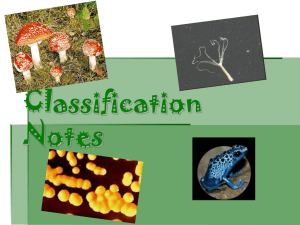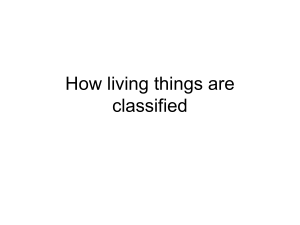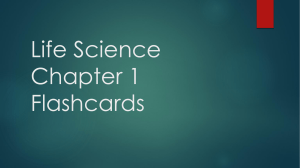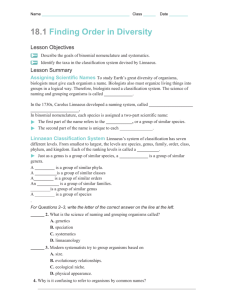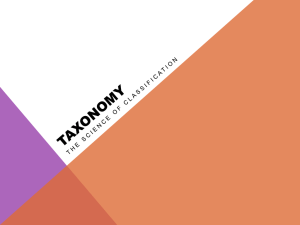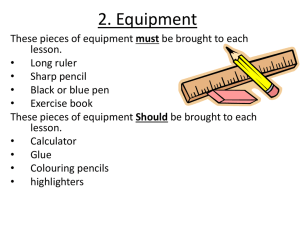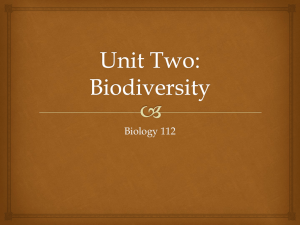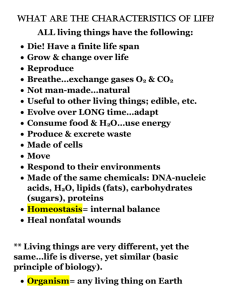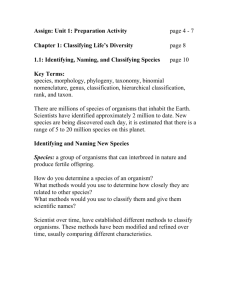Characteristics & classification of life What/who are scientisits
advertisement
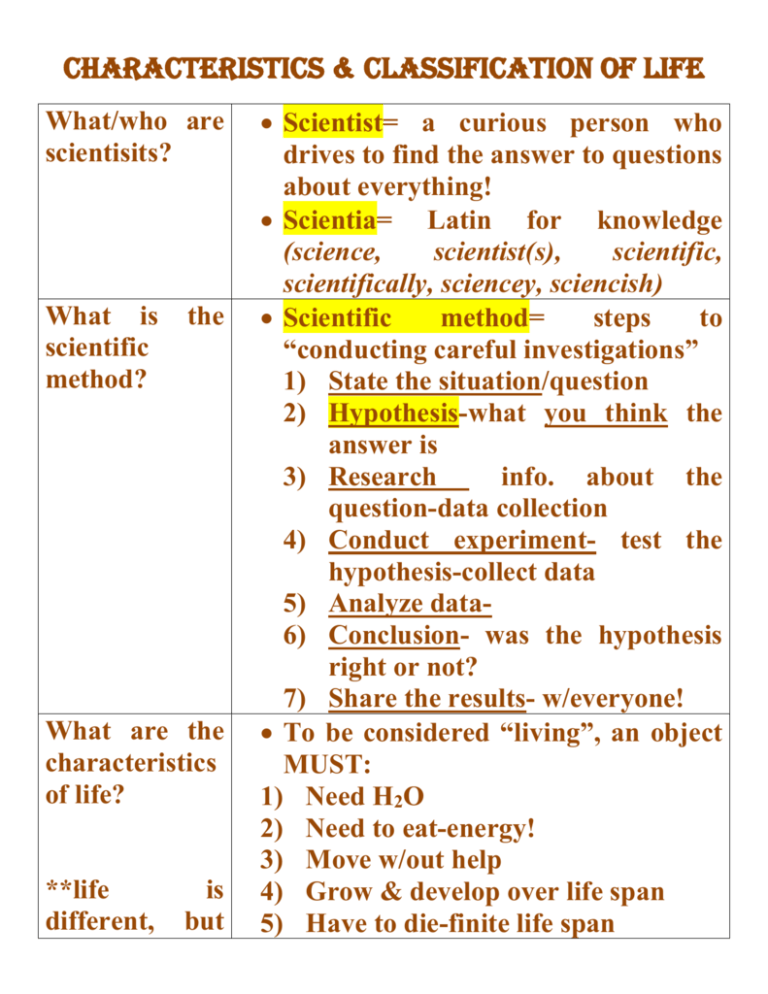
Characteristics & classification of life What/who are scientisits? What is scientific method? the What are the characteristics of life? **life different, is but Scientist= a curious person who drives to find the answer to questions about everything! Scientia= Latin for knowledge (science, scientist(s), scientific, scientifically, sciencey, sciencish) Scientific method= steps to “conducting careful investigations” 1) State the situation/question 2) Hypothesis-what you think the answer is 3) Research info. about the question-data collection 4) Conduct experiment- test the hypothesis-collect data 5) Analyze data6) Conclusion- was the hypothesis right or not? 7) Share the results- w/everyone! To be considered “living”, an object MUST: 1) Need H2O 2) Need to eat-energy! 3) Move w/out help 4) Grow & develop over life span 5) Have to die-finite life span the same!** What is DNA? 6) 7) 8) 9) 10) 11) Breathe-exchange of gases Reproduce Excrete wastes Made out of cells-1 or lots++++ Respond to their environment Made of the same basic chemicals/compoundscarbohydrates, proteins, lipids, H2O, nucleic acids (DNA) 12) Adapt to its environment-evolve over time 13) Maintain body balance=homeostasis 14) Heal wounds that aren’t fatal nonliving= doesn’t have all living characterisitcs dead= lived before, but now no longer DNA= DeoxyriboNucleic Acid= genetic material passed from parent to offspring that carries info./controls who you are/what you look like Shaped like a twisted ladder=double helix…discovered by Drs. Watson & Crick in 1953 The sides are sugar & phosphate How do we classify living things? 4 nitrogen bases make the “rungs of the ladder”…A&T and G&C (diagram) Organisms are grouped with similar organisms= living things Organisms are classified so they are easier to study Organism are grouped according to cell type, # of cells & how they get food Organisms that make their own food= autotroph plants or plant-like Organisms that hunt their food= heterotroph animals or animal-like **from broad to specific:** 1) DOMAIN: 3 based on cell type prokaryote= cells w/out a nucleus…unicellular, VERY simple organisms 1)bacteria 2)archaea eukaryote= cells w/ a nucleus around their DNA 3)eukarya 2) KINGDOM: 4 in eukarya domain based on # of cells & how they get food What did I learn from the DVD, “Classification ” protist/protista: plant/plantae fungi animal-animalia 3) PHYLUM: 2 plant kingdom phyla 9 animal kingdom phyla-8 invertebrate (no bones!) & 1 vertebrate 4) CLASS: 3 vascular plant classes 5 vertebrate classes 5) ORDER: 1+ orders per class 6) FAMILY: 1+ families per order 7) GENUS: 1+ genus per family 8) SPECIES: 1 distinct organism…has babies that can have babies…1+ species per genus 3.5 million+ species discovered so far Aristotle did first classification system Latin= language of classification system b/c it is a dead language so it can’t be changed Everywhere you go you see some living thing Closely related species can mate but What is binomial nomenclature? the babies are sterile-can’t have babies EX: mule, liger, wholphin=hybrid animals Classification is not a perfect scienceit’s fluid/changing Cryptozoologist=finds new species Carolus Linnaeus created the modern classification system & binomial nomenclature Binomial nomenclature= two names for an organism Taxon=category…taxonomy=putting living things into categoriesclassifying them Binomial nomenclature= two names for an organism Are in Latin 1st word is the genus, 2nd word is the species/specific epithet BOTH words name a unique organism, the species 1st word is capitalized, 2nd word is not; in italics; 1st word can be an intial EX: Felis domesticus or F. domesticus is a house cat AKA scientific name


